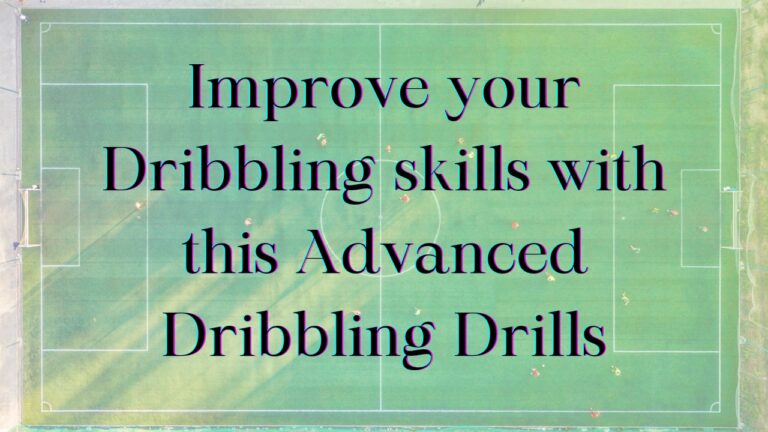Defending one-on-one against an attacking opponent is one of the most critical skills for soccer defenders. Your ability to come out on top in these make-or-break situations can determine the outcome of a game. Mastering the techniques for winning individual duels prevents scoring chances, builds confidence among your teammates, and forces attackers into making poor decisions.
Why One-on-One Defending is Critical for Soccer Defenders
When going head-to-head against a striker or winger, the implications are massive for a defender. Statistics clearly show just how vital it is to defend these scenarios successfully:
- In the English Premier League, over 30% of goals conceded originate from one-on-one situations.
- Top European clubs average conceding 0.8 goals per game from an attacker beating their marker in isolation.
- Defenders with a 60% or lower one-on-one success rate give up a dangerously high number of goals.
By winning more of your individual battles, you limit the number of clearcut chances created by the opposing team. Your teammates will trust you more knowing you can defend on an island without constant help. Mastering one-on-one defending also allows you to dictate play by forcing the attacker into making suboptimal decisions.
Proper positioning, timing, patience, and concentration form the foundation for excelling in these critical moments that decide games. Let’s examine the key tips and techniques you need to master as a defender when going one-on-one.
Master Your Footwork and Body Positioning
The positioning of your feet and body is integral when isolated against an attacker. Adopt an athletic stance with your knees bent, on the balls of your feet, and arms out for balance. Keep your feet active and shuffle them when the attacker makes lateral movements.
Lead with the foot closest to the ball when approaching the attacker. This allows you to step across and block shooting or passing lanes. Position your body between the attacker and the goal at an angle. Avoid overcommitting too early or hesitating, which creates openings for the attacker to exploit.
Practice drills where you mirror an attacker’s movements without the ball. Have a teammate or coach call out commands like “step left” or “turn” so you can respond quickly. Work on different footwork patterns like lateral shuffles, crossover steps, and backpedaling.
Mastering proper positioning and agile footwork allows you to cover ground efficiently when isolated one-on-one. Your body acts as a barrier to prevent progression towards a goal.
Time Your Tackle Perfectly
Patience and timing are critical when attempting a tackle in a one-on-one duel. Avoid diving in too early – delay your final approach as long as possible. Time your tackle when you have the optimal angle and highest probability of winning the ball cleanly.
Consider the attacker’s touches, body position, and line of sight. For example, tackle when the ball is furthest from their body or they’re facing away from you. Use jockeying techniques like curving your run to buy time as you wait for the right moment.
Practice reading cues through tackle timing drills. Have a teammate dribble at you while you focus on their hips and touches to gauge when to commit. Watch slow-motion video clips to analyze defenders’ positioning and timing on successful tackles.
Rushing leads to fouls and being beaten too easily. Patience, reading the game, and perfect timing separate the best one-on-one defenders.
Force the Attacker Where You Want
As a defender, you can use your body shape and speed to shepherd the attacker into areas that benefit you. Curve your approach and run to force the attacker onto their weaker foot. Prevent them from turning towards the goal by angling your body position properly.
Funnel the attacker towards the sidelines or into midfield, where less dangerous crossing and shooting opportunities exist. Communicate and coordinate with any covering defenders to dictate which directions you want to block off.
Drills like two-on-ones and three-on-ones help you practice guiding attackers into designated zones away from the goal. Analyze one-on-one clips focused on the defender’s angle of approach and body shape to cut off angles.
Forcing the attacker into poor crossing positions or backward away from the goal swings the advantage in your favor during one-on-one duels. Maintaining concentration is vital to getting through these situations.
Maintain Concentration From Start to Finish
Staying mentally engaged throughout the entire one-on-one duel is vital. Ignore any feints, tricks, or flashy moves – stick to the fundamentals. Don’t lose focus if you get beat or dwell on mistakes.
Keep your concentration and body position until you win the ball. Fight right until the whistle on every individual battle. Stay in the moment – don’t think about your previous error or the next play.
Do solo visualization, repetition, and communication drills to improve focus. Practice one-on-one scenarios from start to finish with intensity and determination.
Maintaining your defensive concentration and intensity for the full six to ten seconds of each duel is key. Combine that with the footwork, timing, positioning, and forcing skills above to master one-on-one defending.
Related Post: The Critical Role of Defenders in Set Pieces in Soccer
The Top 14 Key Attributes of Successful Soccer Defenders
Author







